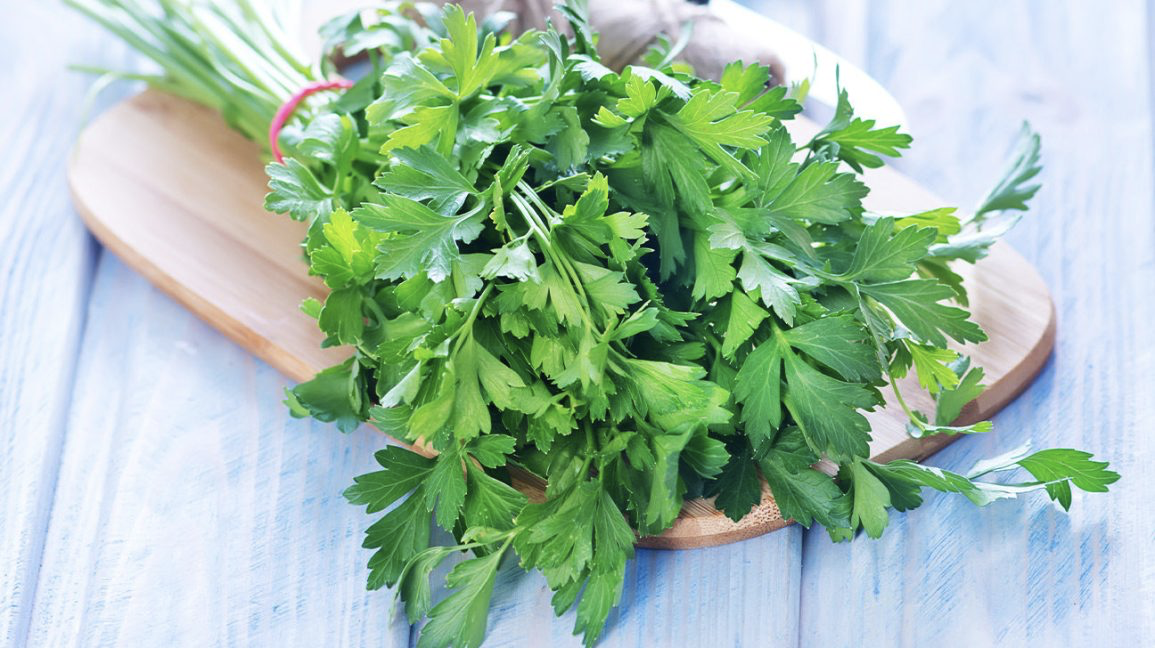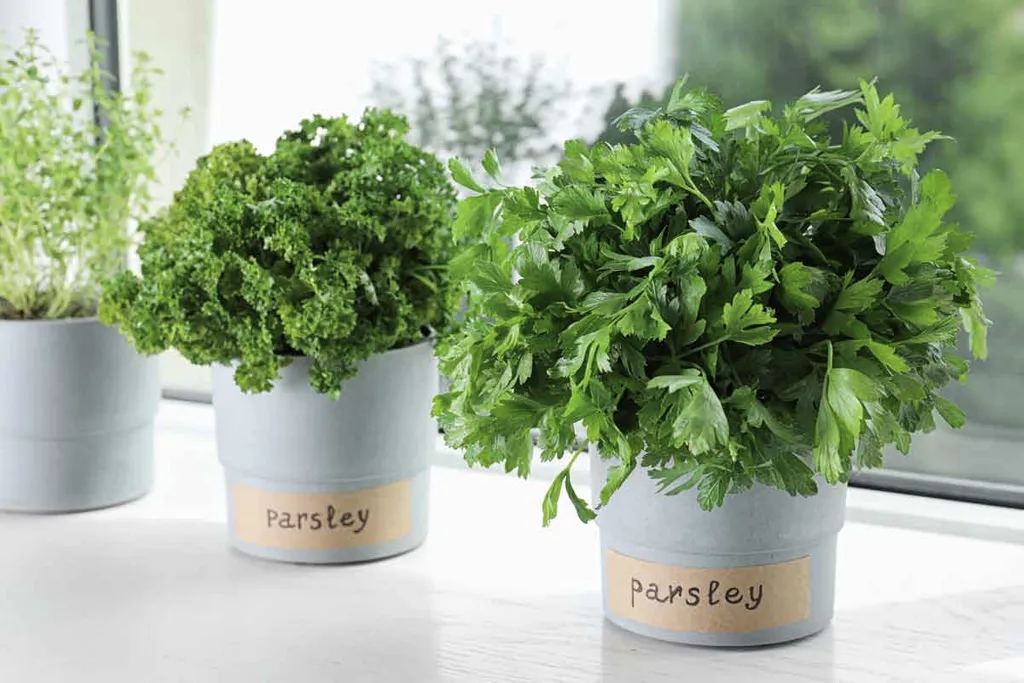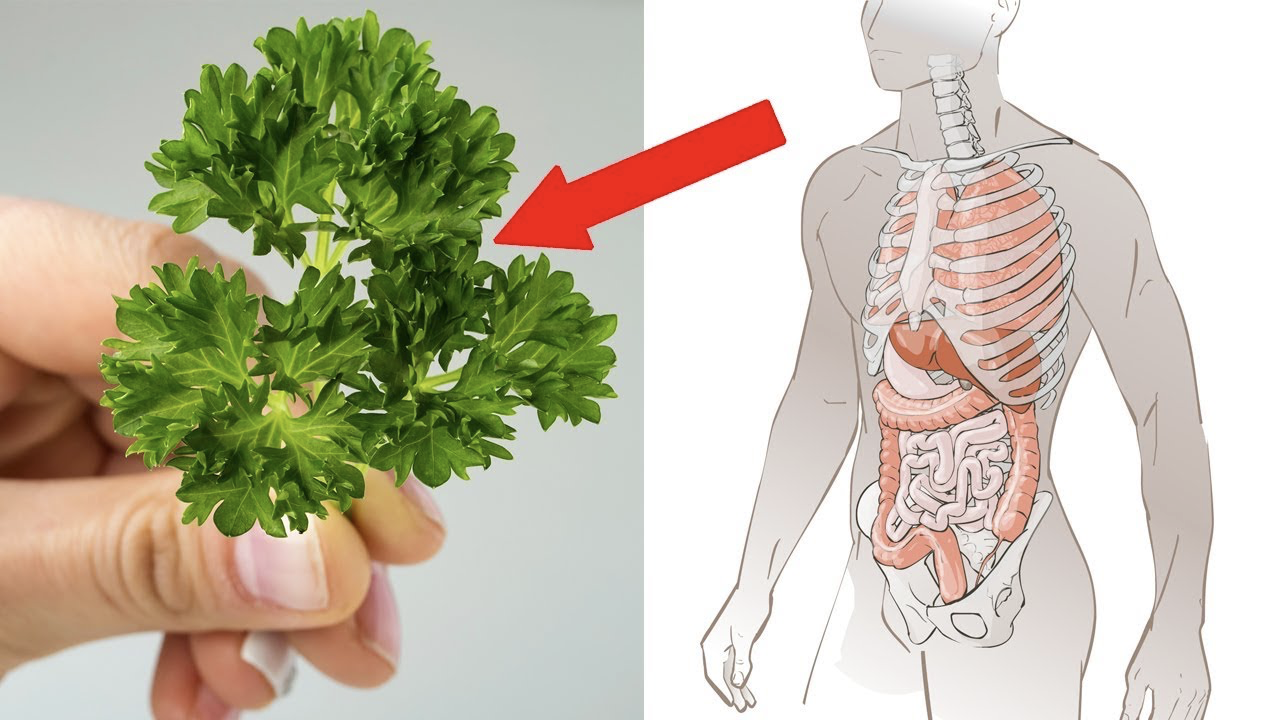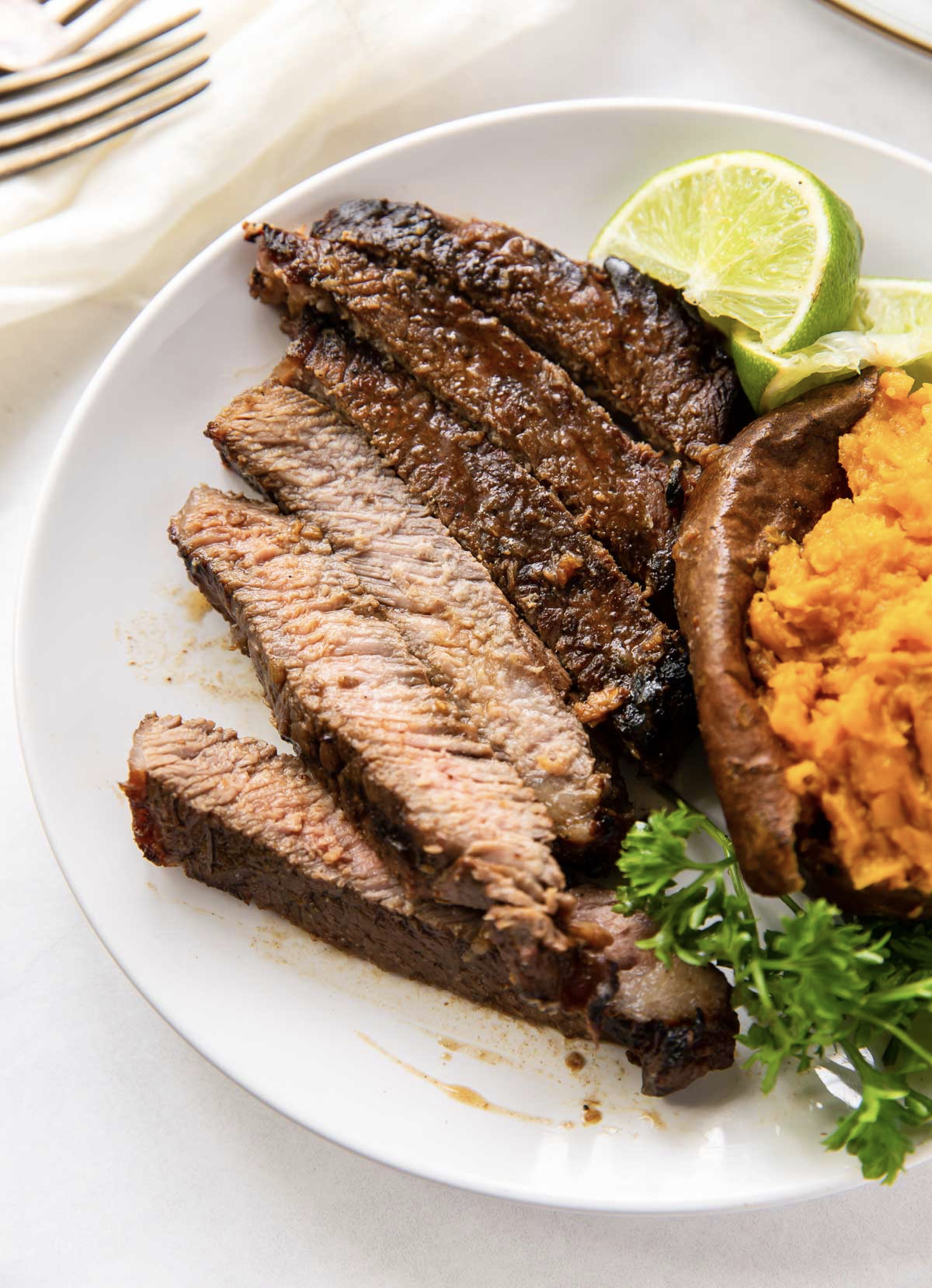Parsley—Consider Including More of It in Your Diet!
We all know this pretty plant is the herb of choice for garnishing most entrees—it adds such a nice bit of color to your plate or soup bowl.

It’s been around for more than 2000 years, so professional chefs and avid cooks have had plenty of time to discover it’s able to do more than garnish a dish. For instance, consider these ideas:
For a blast of bio-available calcium, add it to your green smoothie each morning. A little goes a long way though—it’s pungent taste can easily overwhelm your drink.
Chop it fine and sprinkle it over your fresh green salad.
Chop it and add a little to steamed veggies. It adds to the presentation quality of your dish and boosts the vitamin count appreciably.

Chop it again and add some to your meatloaf or meatball mixture.
Keep chopping—add some to your bread dough along with some dill, rosemary, and thyme.
And chop some more—add 1/2 teaspoon to each compartment of your ice cube trays; fill with water and freeze. These ice cubes lend a wonderful touch to lemon and cucumber water!
And one of the best ways to use an entire bunch at once? CHIMICHURRI—the bright green sauce made by blending parsley and garlic. It originated in Argentina and Uruguay. It’s traditionally served with fish (especially salmon), but also goes well with grilled or roasted veggies. And die-hard chimichurri fans will even drizzle it over grain bowls.

Here’s a terrific recipe for chimichurri that I found long ago on www.acouplecooks.com. Husband and wife, Alex and Sonja Overhiser created this and I can’t thank them enough. It’s a staple at our house.

1 cup fresh cilantro and tender stems, tightly packed (about 1 large bunch)
1 cup fresh parsley (leaves and tender stems, tightly packed—about about 1 large bunch)
2 green onions (tops only)
1 clove garlic
1/2 cup extra virgin olive oil
1 tablespoon red wine vinegar
1 tablespoon fresh lemon juice
1/2 teaspoon dried oregano
1/4 teaspoon kosher salt
several grinds black pepper
Directions:
Add Recipe to Cook'n
Lastly, it’s a pretty and easy to grow plant, whether in the flower garden, vegetable garden, or kitchen windowsill.

And besides being a terrific herb with which to cook, it boasts several time-tested health benefits:
Parsley is rich in calcium and vitamins C, B 12, K and A. This means parsley keeps your immune system strong, tones your bones and heals the nervous system, too (all important issues when it comes to insulin resistance and diabetes, by the way!).
It helps flush out excess fluid from the body, thus supporting kidney function. (However, a caution here: don’t overdo its use if you have kidney and gall bladder problems—the herb contains oxalates, which can aggravate existing issues.)

Regular use of parsley can help control your blood pressure. The folic acid in this herb is like a tonic for your heart.
Parsley is a tried-and-true antidote to joint pain. That’s because of its anti-inflammatory properties.
Parsley tea relaxes stiff muscles and encourages digestion.
Abundant peer-reviewed research shows that parsley, especially its essential oil, plays a role in inhibiting cancerous tumors. In fact, scientists have billed it a ‘chemoprotective’ food.

Finally, don’t forget to chew some on your dinner plate when dining out—it freshens breath. Meanwhile, hats off to parsley, and here’s to including more of it in our diets!
blog comments powered by Disqus

It’s been around for more than 2000 years, so professional chefs and avid cooks have had plenty of time to discover it’s able to do more than garnish a dish. For instance, consider these ideas:
For a blast of bio-available calcium, add it to your green smoothie each morning. A little goes a long way though—it’s pungent taste can easily overwhelm your drink.
Chop it fine and sprinkle it over your fresh green salad.
Chop it and add a little to steamed veggies. It adds to the presentation quality of your dish and boosts the vitamin count appreciably.

Chop it again and add some to your meatloaf or meatball mixture.
Keep chopping—add some to your bread dough along with some dill, rosemary, and thyme.
And chop some more—add 1/2 teaspoon to each compartment of your ice cube trays; fill with water and freeze. These ice cubes lend a wonderful touch to lemon and cucumber water!
And one of the best ways to use an entire bunch at once? CHIMICHURRI—the bright green sauce made by blending parsley and garlic. It originated in Argentina and Uruguay. It’s traditionally served with fish (especially salmon), but also goes well with grilled or roasted veggies. And die-hard chimichurri fans will even drizzle it over grain bowls.

Here’s a terrific recipe for chimichurri that I found long ago on www.acouplecooks.com. Husband and wife, Alex and Sonja Overhiser created this and I can’t thank them enough. It’s a staple at our house.

Chimichurra Sauce
Yield: about 3/4 cup
Ingredients:
1 cup fresh cilantro and tender stems, tightly packed (about 1 large bunch)
1 cup fresh parsley (leaves and tender stems, tightly packed—about about 1 large bunch)
2 green onions (tops only)
1 clove garlic
1/2 cup extra virgin olive oil
1 tablespoon red wine vinegar
1 tablespoon fresh lemon juice
1/2 teaspoon dried oregano
1/4 teaspoon kosher salt
several grinds black pepper
Directions:
Slice off the tops of the green onions. In an immersion blender or small sauce blender, blend all ingredients until a smooth sauce forms, (if necessary, stop and mix the ingredients to allow them to fully blend).
To serve, drizzle the salmon with chimichurri: see our Baked Salmon Recipe for more.
To serve, drizzle the salmon with chimichurri: see our Baked Salmon Recipe for more.
Recipe formatted with the Cook'n Recipe Software from DVO Enterprises.
Lastly, it’s a pretty and easy to grow plant, whether in the flower garden, vegetable garden, or kitchen windowsill.

And besides being a terrific herb with which to cook, it boasts several time-tested health benefits:
Parsley is rich in calcium and vitamins C, B 12, K and A. This means parsley keeps your immune system strong, tones your bones and heals the nervous system, too (all important issues when it comes to insulin resistance and diabetes, by the way!).
It helps flush out excess fluid from the body, thus supporting kidney function. (However, a caution here: don’t overdo its use if you have kidney and gall bladder problems—the herb contains oxalates, which can aggravate existing issues.)

Regular use of parsley can help control your blood pressure. The folic acid in this herb is like a tonic for your heart.
Parsley is a tried-and-true antidote to joint pain. That’s because of its anti-inflammatory properties.
Parsley tea relaxes stiff muscles and encourages digestion.
Abundant peer-reviewed research shows that parsley, especially its essential oil, plays a role in inhibiting cancerous tumors. In fact, scientists have billed it a ‘chemoprotective’ food.

Finally, don’t forget to chew some on your dinner plate when dining out—it freshens breath. Meanwhile, hats off to parsley, and here’s to including more of it in our diets!
Sources:
- www.healthline.com
- www.landolakes.com
- www.therisingspoon.com
- www.acouplecooks.com
- www.thekitchenherbs.com
- www.youtube.com
- www.kristineskitchenblog.com
 Alice Osborne
Alice Osborne
Weekly Newsletter Contributor since 2006
Email the author! alice@dvo.com
